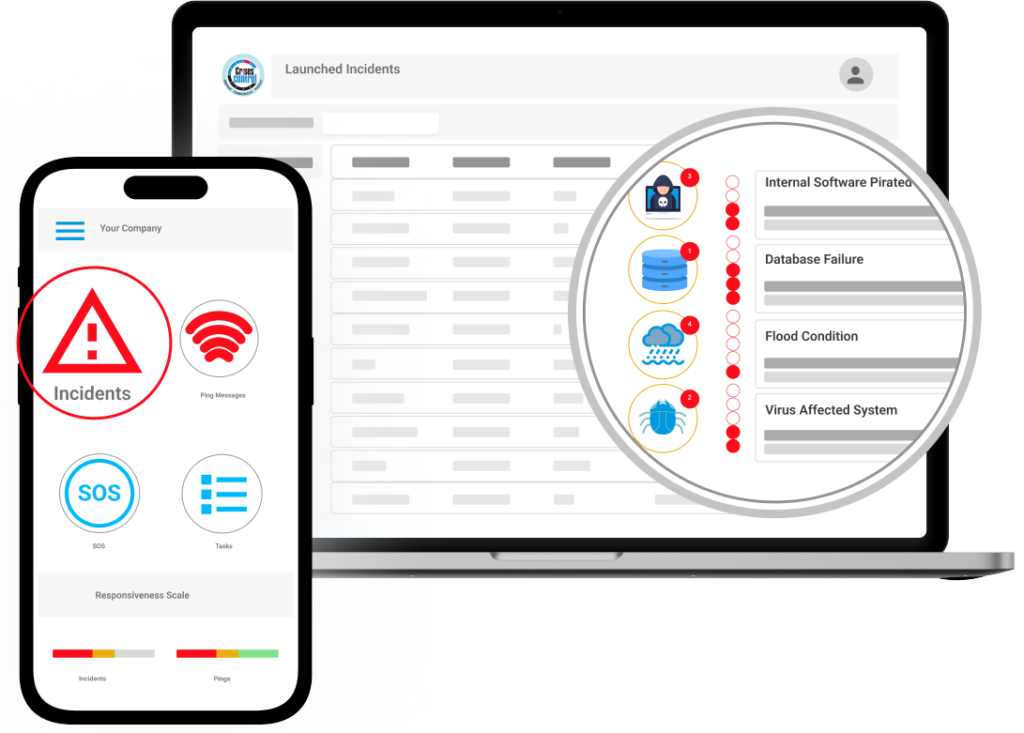In the fast-paced and unpredictable world of today’s business environment, organisations must be equipped to handle unexpected crises with precision and agility. Critical Incident Management is the key to not only surviving, but thriving in the face of adversity. In this blog, we delve deep into the 5 stages of incident management, unravelling the intricacies of each phase, and spotlighting how Crises Control emerges as a beacon of support in navigating critical incidents.
Understanding the 5 Stages of Critical Incident Management
1. Preparation: Fortifying the Foundation
Before a crisis strikes, meticulous preparation is crucial. The first stage involves identifying potential risks, formulating response plans, and establishing communication channels. Crises Control provides a comprehensive platform for creating and storing contingency plans, ensuring that your organisation is prepared for any unexpected incident that may occur.
2. Identification: Recognising the Crisis
The second stage is recognising when an incident occurs. Crises Control’s Incident Management Software employs advanced algorithms to swiftly identify and categorise incidents, minimising response time and optimising resource allocation. Early detection is the key to mitigating the impact of any crisis.
3. Containment: Swift Action for Control
Once an incident is identified, containment is crucial. Crises Control facilitates real-time communication, enabling quick and coordinated responses. Automated alerts and notifications ensure that the right people receive the right message at the right time, allowing for a faster and more effective containment of the crisis.
4. Eradication: Resolving the Issue
With the crisis contained, the next step is eradication. Crises Control streamlines communication and collaboration, empowering teams to work together seamlessly towards resolving the issue. The platform’s intuitive interface ensures that stakeholders are always on the same page, expediting the resolution process and minimising operational downtime.
5. Recovery: Learning and Moving Forward
The final stage involves learning from the incident and implementing measures to prevent future occurrences. Crises Control’s comprehensive reporting and analytics tools provide valuable insights into the incident response process, enabling organisations to continuously improve and adapt to emerging threats. This ensures a more resilient future for your organisation.
How Crises Control Supports You Every Step of the Way

Crises Control stands out as a leader in Critical Incident Management, offering a robust platform designed to navigate the complexities of each incident management stage. From preparation to recovery, here’s how Crises Control adds value:
1. Centralised Command Center
Crises Control provides a centralised platform for managing all aspects of a critical incident, ensuring seamless coordination and communication between you and your team.
2. Automated Incident Identification
Leveraging advanced technology, Crises Control automates the identification of incidents, reducing response times and increasing overall efficiency.
3. Real-time Communication
The platform enables real-time communication and collaboration, ensuring that stakeholders are informed and connected, regardless of their location.
4. Intuitive User Interface
Crises Control’s user-friendly interface makes it easy for teams to navigate and collaborate during high-stress situations, facilitating a more efficient response and minimising downtime.
5. Comprehensive Reporting and Auditing
Incident reporting and auditing is critical for organisations to improve their incident response and prevent future incidents. Crises Control’s incident reporting software creates auditable management reports based on actual incident data,records, and performance information. These reports are critical for understanding how your incident response plan performed and how it can be improved for future occurrences.
Conclusion: Take Control with Crises Control
In the world of Critical Incident Management, precision and speed are non-negotiable. Crises Control not only guides organisations through the 5 stages of incident management, but elevates their ability to respond effectively to any crisis. Don’t wait until the next incident occurs – take control with Crises Control.
Ready to Elevate Your Incident Management? Contact us for a FREE personalised Demo today!








